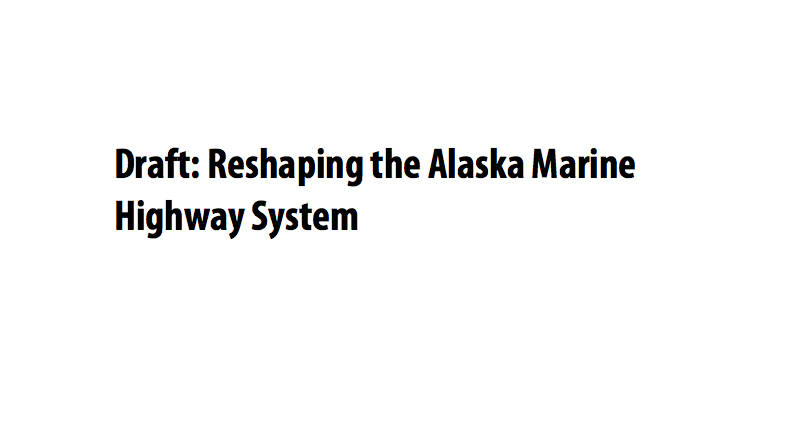The authors of the draft report, entitled “Reshaping the Alaska Marine Highway System” concluded that “reducing the AMHS operating subsidy to $24 million will be extremely difficult if there is also a desire to provide minimum levels of service to existing AMHS communities.” In the following paragraph, they explained that even though Option 3B-2 would leave Kodiak and Cordova without winter service, it was the only one that “achieved the target subsidy level.”
[Five take-aways from the AMHS restructuring report]
If that conclusion makes no sense, it’s because the target subsidy they were given was determined without much thought.
The average annual AMHS subsidy over the prior decade was $104 million. The study team had “an overall goal to cut the subsidy by at least 50% from the $48.1 million FY 2020 operating budget.”
That gave them the same figure which Gov. Mike Dunleavy included in his state budget last year. And we all know how he arrived at that. The ferry system he swore he’d protect while running governor became expendable when he realized the budget math he’d been using never added up.
When the $24 million subsidy was first proposed, Dunleavy’s budget director said the AMHS was an “inefficient system.” Option 3B-2 doesn’t make it efficient. Ownership would transfer to a pair of public corporations. Fares would increase 25%. Ferry service would be reduced to a third of its operation during the past two decades. And the state would still have to fund half of the program.
What drives the system’s operating expenses up and user revenue down are the geographic and demographic realities of serving Alaska’s coastal communities. Therefore, those factors should have been fully examined when determining the appropriate level of state subsidy.
Consider how they affect the ferry system in British Columbia. BC Ferries is a publicly owned, independently managed corporation that operates 35 vessels to 47 ports along a thousand miles of coastline which generally resembles the ferry routes in Alaska.
In 2019, BC Ferries transported 22.3 million people and 8.9 million vehicles. About half traveled on three routes connecting the Vancouver metro area to the two largest cities on Vancouver Island. According to the BC government, all three are “self-supporting and receive no service fee from provincial taxpayer funds.”
The rest are subsidized. And some much more than others.
Back in 2012, the government began studying alternatives to reduce them. According to a legislative reporter covering that story, the least traveled of the Vancouver routes wasn’t profitable back then. It was losing “$29.86 million a year, or about $50 for each vehicle it carries.” In other words, it would have broken even if vehicle fares were increased $50.
I don’t know all the changes that reversed those losses. It’s apparent that fares were raised about 20% for the 1.8 million passengers and 600,000 vehicles which made the two-mile long trip. And that service wasn’t seriously cut.
But whatever improved the operational efficiency in that case isn’t applicable to Alaska. Because the sailing times between most AMHS ports are much longer than two hours. And none transport more than a small fraction of that number of passengers and vehicles.
BC’s Inside Passage route is a different story. Less than 40,000 passengers traveled its 278 miles between Port Hardy to Prince Rupert in 2012. (For reference, Ketchikan to Juneau is 280 miles.) BC’s effective per vehicle subsidy was $2,365.
That makes AHMS look comparatively efficient. Using 2015 data, the average per vehicle subsidy of all Alaskan routes was only $1,063.
Unfortunately, it’s not that simple. And “only” is relative to how much funding is available.
Given Alaska’s fiscal situation, it’s logical to spend time and money studying how to reduce the AHMS subsidy. But the problem with the report Dunleavy commissioned is that it wasn’t structured to produce meaningful results. The target subsidy was a random number. Comparisons to other systems weren’t made. And the economic impacts of reduced service weren’t considered.
But the most revealing omission goes back to the administration’s original claim that AHMS needed to be become a more efficient operation. Because the only inefficiency the report mentions is the pricing structure for bringing vehicles longer than 23 feet onboard.
And to that we can now add the fact that Dunleavy spent $250,000 on a report that tells us almost nothing.
• Rich Moniak is a Juneau resident and retired civil engineer with more than 25 years of experience working in the public sector. My Turns and Letters to the Editor represent the view of the author, not the view of the Juneau Empire.

